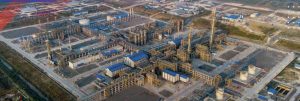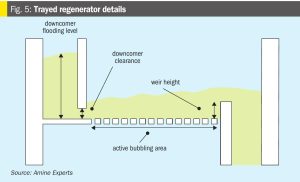
How to revamp a urea plant
Revamps are performed to deliver production improvements at existing urea plants.

Revamps are performed to deliver production improvements at existing urea plants.

M.J. Cousins of Johnson Matthey and K. Nölker of thyssenkrupp Uhde discuss the integration of LCHTM technology and the uhde® ammonia process in providing low carbon ammonia at scale, efficiently, reliably and safely today.

Maire Group says that its nitrogen fertilizer technology licensor Stamicarbon has been awarded new contracts related to its NX STAMI UreaTM technology in Canada. The first award is a process design package and the licensing of an integrated urea and diesel exhaust fluid (DEF) production plant currently being developed by Genesis Fertilizers, a farmer-owned consortium, at Belle Plaine, Saskatchewan. The plant will have a urea melt capacity of 2,500 t/d, with operations expected to begin by 2029. Also thanks to a carbon capture and sequestration unit, it will be the first proposed low-carbon nitrogen fertilizer plant in Canada. Stamicarbon will apply its proprietary flash urea melt technology to enhance operational efficiency and reliability while minimising process steam consumption. The plant will also include a DEF facility with a production capacity of 1,500 t/d.

Topsoe has been selected by Guangxi Free Trade Zone Chuangui Lingang New Energy Co., Ltd to deliver technology and services to produce sustainable aviation fuels (SAF) and renewable diesel.

Maire Group says that its NextChem (Sustainable Technology Solutions) subsidiary has been awarded a three-year contract by Saudi Aramco Total Refining and Petrochemical (SATORP) – a joint venture between Saudi Aramco and TotalEnergies – to provide engineering and technology services related to the sulphur recovery complex of SATORP’s refinery in Jubail, Saudi Arabia. NextChem will provide process and engineering advisory services to enhance performance, support operational troubleshooting, and improve energy efficiency and the carbon footprint of the three units (sulphur recovery unit, amine regeneration unit and sour water stripper) which comprise the sulphur recovery complex. The services will also include recommendations for capital investment opportunities, design enhancements, and technology improvements.

Metso has launched its new Cu POX leaching process for the copper extraction industry. The company says that, as ore compositions change due to depletion of deposits and increasing environmental and efficiency demands, this solution not only maximises copper recovery but also reduces environmental impact.

The first installed combination of a regenerative SO2 scrubbing system with a sulphuric acid plant using Worley Chemetics’ CORE™ reactor technology started up in November 2022. The combination of these technologies allows production of high-grade sulphuric acid from gases with low and/or fluctuating SO2 concentrations. C. Trujillo Sanchez and R. Dijkstra of Worley Chemetics report on the design concepts of this integrated process, highlight where it is most effective and report on the start-up and first years of operation of the plant.

Preventing regenerator amine carryover to the sulphur recovery unit can have catastrophic consequences and must be avoided at all costs. B. Spooner and M. Sheilan of SGS Amine Experts detail how by correctly interpreting operating data, having proper instrumentation and good chemical analysis, amine carryover can be prevented.

Rotary coolers remain a popular choice with fertilizer producers, explains Shane Le Capitaine of FEECO International, thanks to their ability to meet the industry’s rigorous demands.

Igor Makarenko of Solex Thermal Science reviews the main equipment options for fertilizer cooling and their relative merits.